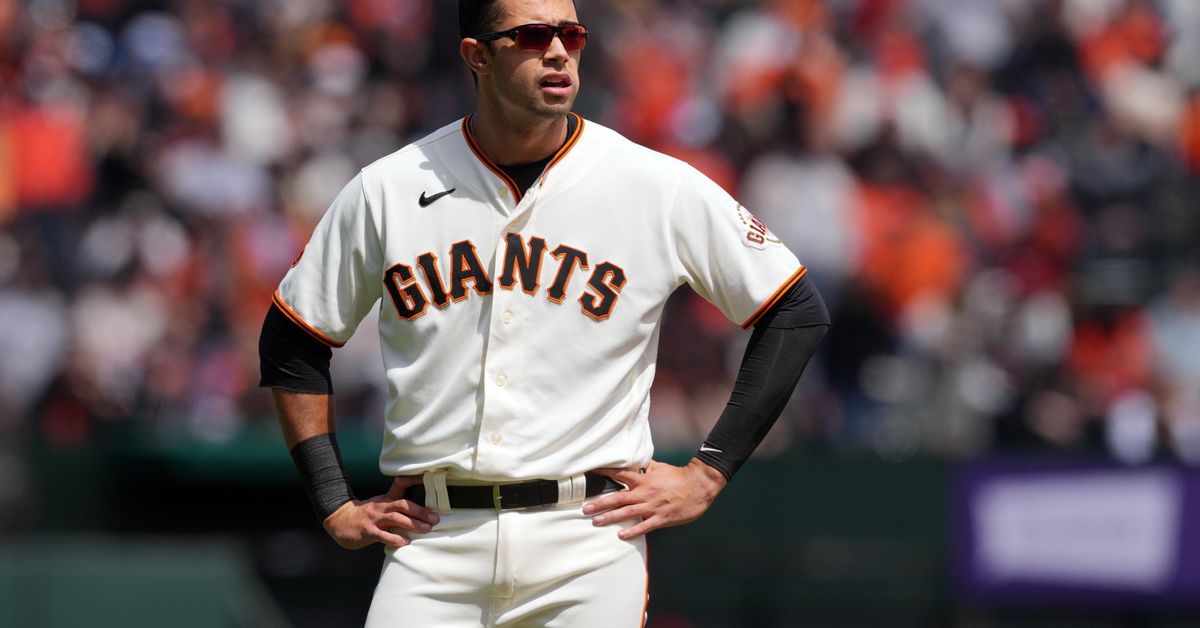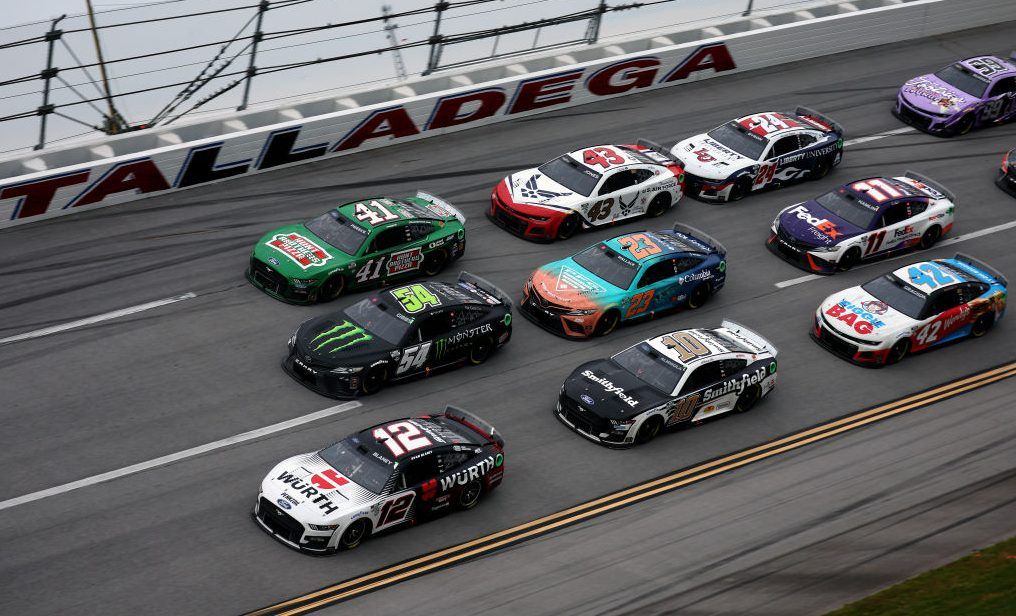MLB final: Base running mistake proves costly in Giants 5-2 loss
We’ve grown accustomed to a certain type of life-style: Late-inning offensive dramatics, the headlining hits, shut-down pitching, and come-from-behind wins. Fans’ rally caps affixed in the inside-out position, the sideways crowns never ridiculous because they’ve worked.
In Sunday’s finale against the Arizona Diamondbacks where the San Francisco Giants worked the tying run on base in the 8th and got it to the plate in the 9th against a bullpen with 13 blown saves to their name (second in the league behind Colorado)—conditions seemed optimal for some more late-inning magic.
But a base-running gaffe by Blake Sabol popped the rally bubble in the 8th, and a well-struck ground-out by Thairo Estrada with two runners on sealed the 5-2 loss.
A sour end to an overall pretty freakin’ sweet run of games in which the Giants took a 13 game tour of each of their NL West rivals and came out the other side with 11 wins.
Giants fans, how are you feeling with the mid-season point approaching?? pic.twitter.com/vglB6n0mR1 — SF Giants on NBCS (@NBCSGiants) June 25, 2023
Anthony DeSclafani has had a rough go of things as of late. His fortunes have plummeted while the team’s has soared. In his first 6 starts to open the season, he authored a 2.13 ERA and a 3.30 FIP over 38 IP. Since his 8 inning shutout performance against the Astros on May 2nd, DeSclafani has started 9 games, pitched 46.1 innings with an ERA nearly triple that initial mark and his FIP rose over a point.
The Diamondbacks jumped on Disco for two early runs with timely 2-out hits on some ominous loud contact. The noise ended up being all sound and little fury with DeSclafani ending his day after the 6th, retiring the next 12 batters in a row. While only striking out 3, he forfeited 0 walks which has plagued him a bit in recent days.
The starter’s promising performance was spoiled by his Arizona counterpart, an efficient and stifling Ryne Nelson.
The San Francisco Giants had faced Nelson before slugging 4 runs on 7 hits and 2 HR over 4.1 innings pitched on May 12th. Things went differently Sunday afternoon as the right-hander rode his change-up through 7 innings, allowing 1 run on 2 BB, 3 H and 6 K’s while only throwing 89 pitches.
Nelson retired 16 straight San Francisco hitters, striking out Blake Sabol in the 1st with runners at the corners to striking out Thairo Estrada to ostensibly end the 6th.
Estrada found himself completely on his front foot on a slider scuffing the left-handed batter’s box. A swing that will make a hitter’s eyes glaze over and stare into the vast horizon-less distance as they loiter in the box, not wanting to go back to the dugout, not wanting to be anywhere. Estrada couldn’t help but indulge in that small comfort while catcher Gabriel Moreno skittered off behind him to recover the loose ball that had skipped to the wall. Even with the pause in the box, Estrada was able to advance to first on the strikeout wild pitch and scored two batters later on a J.D. Davis single, halving the Diamondbacks 2-run lead.
J.D. gets the Giants on the board pic.twitter.com/PPJ6bAZ5hd — SF Giants on NBCS (@NBCSGiants) June 25, 2023
Excuse this digression of baseball nerdery: But is the dropped-third strike rule really that strange? Bogus? Vestigial? Nonsensical?
The rule has its roots in 18th-century Germany in an ancestral ball-and-stick game that tried to eliminate the possibility of a terrible hitter filibustering a game by being unable to make contact. There were no called-strikes or balls, but the hitter had 3 swings, and on their third attempt the ball was “in play” even if they did not make contact.
Through centuries, alterations, manipulations,and catcher-pitcher frustrations, the rule remains. It might feel like anachronistic, an odd historical holdover and the appendix of baseball regulations. But the rule has burst on the biggest stage with Mickey Owen in 1941, and in 2019 with Justin Verlander’s 3,000 K, and the corpus has survived because the dropped-third strike rule is driven by a logic fundamental to the game: the baseball needs to be secured by the defense for an out to be recorded.
There are some ticky-tacky exceptions to this tenet: infield fly rule, dropped-third strike with less than two outs and a runner on first, runner interference on the base path or hit by ball in play (are there others? Probably, but I’m going to stop there before completely compromising my argument). All legal footnotes brought upon by the fact that we live in a broken world—the poetry shines through. The defense should not be awarded an out with the ball loose and rattling around the field of play.
In closing, the Giants run in the 6th is valid. I rest my case.
An integral piece to the Giants late-game success has been the stinginess of the bullpen, but San Francisco learned it’s much harder to jump over a hurdle that’s moving away from you. Disco weathered them through the dry middle innings, but relievers Tristan Beck and Ryan Walker allowed Diamondback hitters to tack on runs that further complicated an already tricky task.
Beck committed the cardinal sin of any bullpen arm, walking the lead-off man in three consecutive innings. Two of those free runners would come in to score. Ketel Marte homered one in with his blast in the 8th and Evan Longoria would score on a single by Geraldo Perdomo off Ryan Walker.
Three of the Diamondbacks’ runs came with 2-outs. All of the Giants’ scoring came with 2-outs off the bat of J.D. Davis swinging at the first pitch. But what could’ve been!
After Davis’s second RBI single in the 8th against Scott McGough, Blake Sabol worked a masterful walk to reach base as the tying run. Patrick Bailey then slapped a single that bounded over third base and looked like it’d at least score one and keep the San Francisco rally train chugging.
Oh no ... pic.twitter.com/V4HgzUmRwH — SF Giants on NBCS (@NBCSGiants) June 25, 2023
Instead Evan Longoria, who was pulled off the line for the left-handed Bailey, ran down the soft bounder and picked it in foul territory behind the bag. Davis had to freeze at third but Sabol, who runs aggressively, assumed the ball got through the infield and came hard around second base thinking he might have a chance to score, not realizing that Longoria had the ball until he was about 80 feet to third.
The play was reminiscent of Mookie Betts’ oopsie on June 16th—blunders on the base path don’t often lead to runs. Sabol was tagged out in his retreat, and San Francisco was robbed of an at-bat with the tying run in scoring position and situational hitting master Brandon Crawford at the plate against a shaky D-Backs bullpen.
The play changed the complexion of the game, but the team and Sabol will recover. It’s much easier to learn to check the third-base coach more than it is to lay off a splitter bottoming out below the zone.
Blake Sabol breaks down his baserunning mistake and how he'll use it as a learning experience ⤵️ pic.twitter.com/e8hn45F6ZI — SF Giants on NBCS (@NBCSGiants) June 25, 2023
Similarly the costly error and subsequent loss would’ve been more troublesome if not for the overall good vibes surrounding the Giants. The sting won’t linger considering how well DeSclafani had pitched, how the Giants had threatened to the final at-bat, and how they already sealed the series win against Arizona on Saturday.
It’s always nice to bag a win as a team transitions into another series, but the Giants have been pretty resilient, and a 10-0 bludgeoning on Thursday against San Diego clearly didn’t affect them on Friday.
Off day tomorrow, then Toronto on Tuesday. Keep those rally caps ready.
Source: McCovey Chronicles


